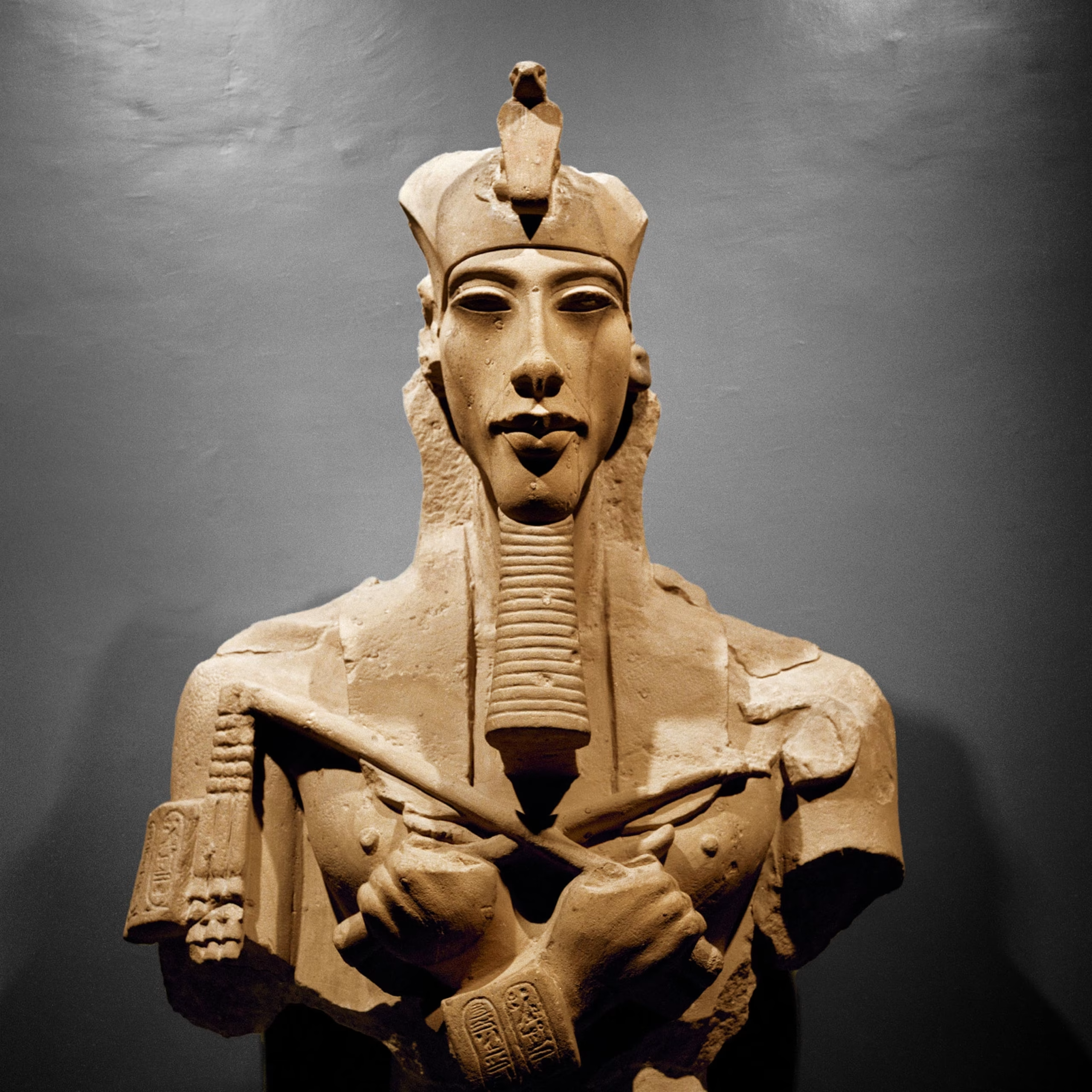Pharaoh Akhenaten stands as a captivating figure in the annals of ancient Egyptian history, revered for his revolutionary religious reforms and artistic innovations. His reign, spanning the 14th century BC, marked a pivotal moment in Egypt’s cultural landscape, leaving an indelible imprint on the civilization’s religious practices, art, and governance. In this article, we delve into the life and legacy of Pharaoh Akhenaten, shedding light on his unprecedented contributions to ancient Egypt.
Unraveling the Enigma of Akhenaten:
Born Amenhotep IV, Akhenaten ascended to the throne of Egypt during the New Kingdom period. What sets Akhenaten apart from his predecessors is his radical departure from traditional polytheistic worship. In a bold move, he introduced Atenism, a monotheistic religion centered around the worship of the sun disk, Aten. This transformation led to the construction of a new capital, Amarna, dedicated solely to Aten, and the propagation of a new artistic style characterized by naturalism and intimacy.

The Religious Revolution:
Akhenaten’s religious revolution was not merely a doctrinal shift but a seismic change that reverberated throughout Egyptian society. By elevating Aten as the supreme deity, he challenged the authority of the powerful priesthood and traditional pantheon of gods. Despite facing resistance, Akhenaten remained steadfast in his beliefs, promoting Atenism as the sole path to divine enlightenment. His devotion to Atenism reshaped religious rituals, temple architecture, and even personal piety, setting a precedent for future monotheistic faiths.
Artistic Renaissance:
The reign of Akhenaten heralded a golden age of artistic expression known as the Amarna period. Under his patronage, artisans and craftsmen flourished, producing exquisite works of art that departed from conventional Egyptian styles. The Amarna artistry emphasized realism, portraying the royal family in intimate and naturalistic poses. Notable examples include the iconic bust of Queen Nefertiti and the boundary-breaking depiction of Akhenaten himself, characterized by elongated features and a sensuous aesthetic.

Legacy and Influence:
Despite the eventual backlash against his reforms and the attempts to erase his memory from history, Akhenaten’s legacy endures as a testament to innovation and defiance. His reign serves as a cautionary tale of the complexities of power and the enduring struggle between tradition and change. Moreover, Akhenaten’s influence transcends millennia, inspiring countless scholars, artists, and theologians to ponder the nature of monotheism and the pursuit of divine truth.
Final Thoughts:
Pharaoh Akhenaten’s legacy resonates through the sands of time, casting a luminous glow on the rich tapestry of ancient Egyptian civilization. His unwavering devotion to Atenism, coupled with his patronage of the arts, left an indelible mark on the cultural landscape of Egypt. As we continue to unravel the mysteries of Akhenaten’s reign, we are reminded of the enduring power of visionary leaders to shape the course of history.
